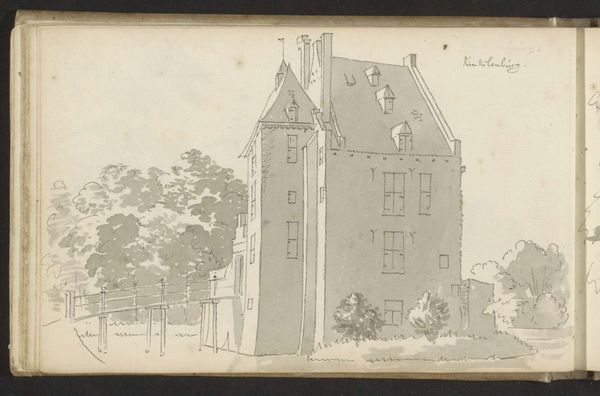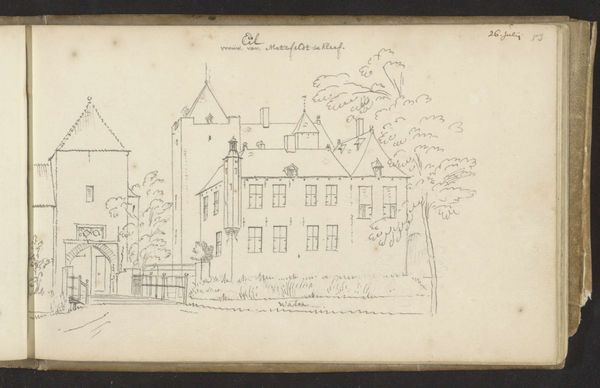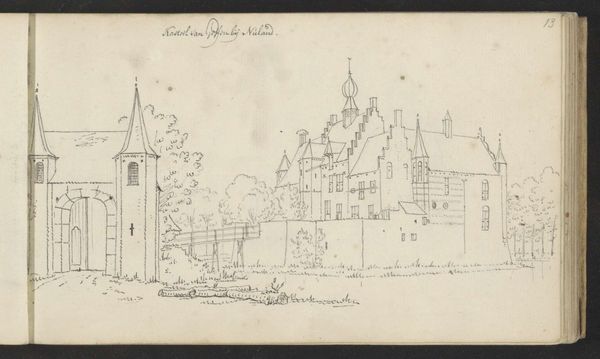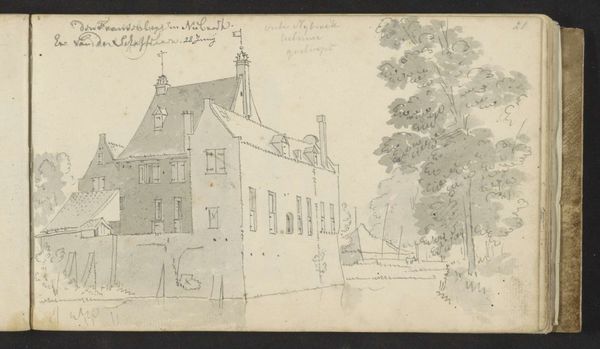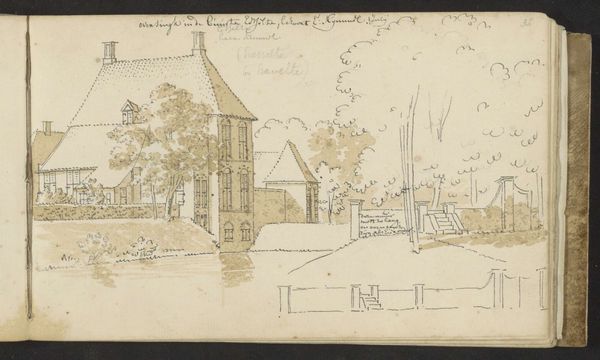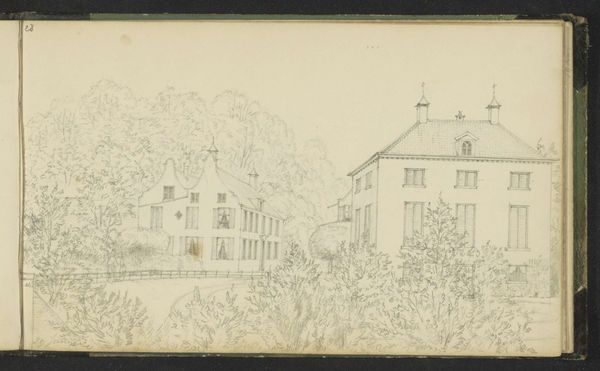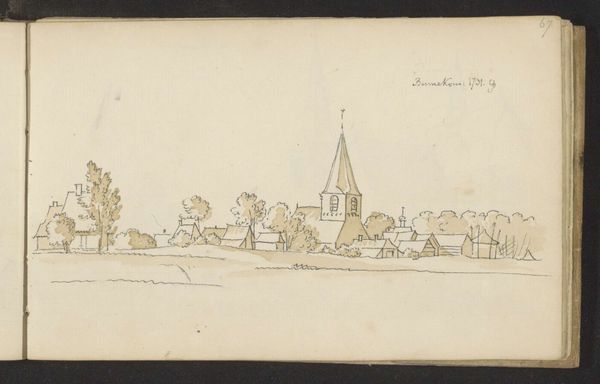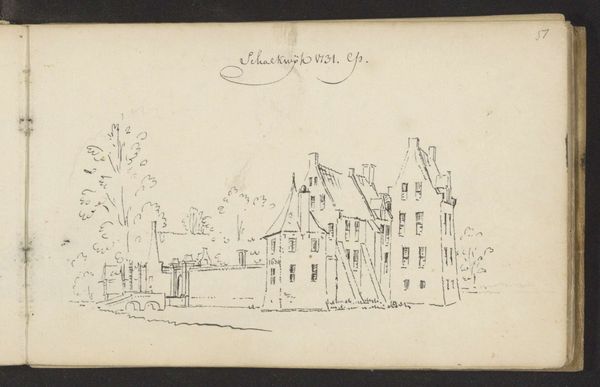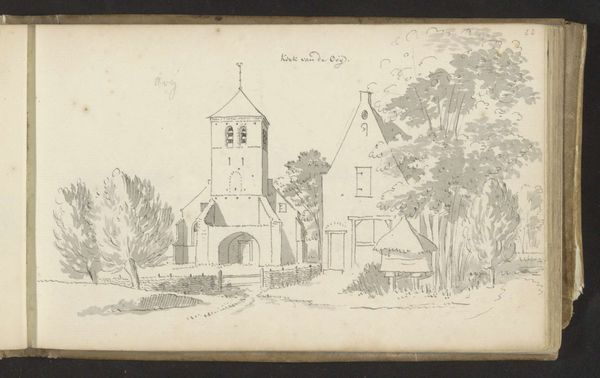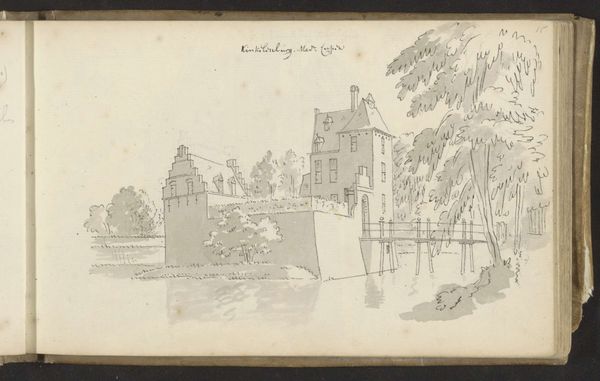
drawing, paper, ink
#
drawing
#
quirky sketch
#
baroque
#
pen sketch
#
sketch book
#
landscape
#
perspective
#
paper
#
personal sketchbook
#
ink
#
ink drawing experimentation
#
pen-ink sketch
#
line
#
pen work
#
sketchbook drawing
#
cityscape
#
storyboard and sketchbook work
#
sketchbook art
Copyright: Rijks Museum: Open Domain
Abraham de Haen the second sketched 'Kasteel Kinkelenburg te Bemmel' using pen in gray ink. De Haen was known for his landscape drawings which were often incorporated into larger topographical collections. Castles like Kinkelenburg were not just architectural structures but symbols of power, privilege, and social hierarchy. Built environments have always served as indicators of class, gender, and race. This simple line drawing captures the essence of 18th-century Dutch society, where land ownership and nobility dictated social status. While De Haen’s drawing presents a seemingly objective view of the castle, it is also a reflection of his own position within that society. As an artist commissioned to document such structures, he was both a participant in and a chronicler of the ruling class. The choice to depict Kinkelenburg, a site of aristocratic life, emphasizes the historical narrative of the period.
Comments
No comments
Be the first to comment and join the conversation on the ultimate creative platform.
